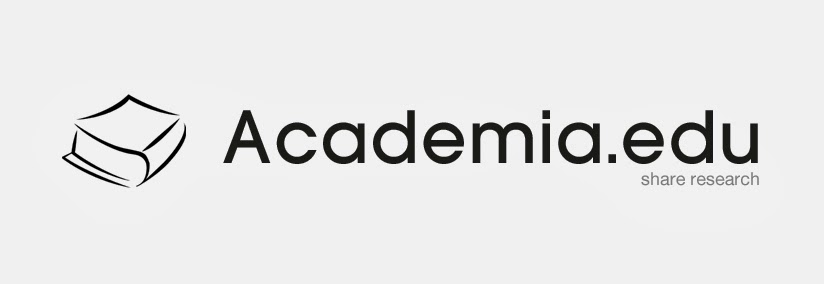Peran Pendidikan Terhadap Ekonomi Digital di Indonesia Tahun 2016
Abstract
ABSTRAK
Saat ini, ekonomi digital dianggap sebagai sektor yang mampu menopang pertumbuhan ekonomi dimasa yang akan datang. Akan tetapi, apakah perkembangan teknologi digital telah diimbangi dengan tingkat pendidikan yang telah diterima oleh penduduk di Indonesia. Oleh karena itu, peningkatan dan pemerataan kualitas SDM merupakan kunci penting untuk bisa berhasil dalam era ekonomi digital. Penelitian ini bertujuan untuk mengetahui pengaruh variabel pendidikan terhadap penggunaan internet oleh perusahaan/usaha di Indonesia pada tahun 2016. Variabel pendidikan yang dimaksud dalam penelitian ini yaitu angka partisipasi murni SD, angka partisipasi murni SMP, angka partisipasi murni SMA, jumlah perguruan tinggi negeri, persentase mahasiswa terhadap jumlah penduduk, dan jumlah guru. Metode yang digunakan dalam penelitian ini yaitu analisis deskriptif kuantitatif dengan analisis regresi klasik (ordinary least square). Hasil dari penelitian menunjukkan bahwa terdapat hubungan antara angka partisipasi murni SMP dan Persentase mahasiswa terhadap jumlah penduduk terhadap penggunaan internet oleh perusahaan/usaha di Indonesia. Oleh karena itu, investasi di bidang pendidikan merupakan komponen penting untuk mendukung perkembangan ekonomi digital. Dengan investasi di bidang pendidikan maka akan didapatkan sumber daya manusia yang memiliki keterampilan dan pengalaman yang lebih baik.
ABSTRACT
At present, the digital economy is considered as a sector that is able to sustain economic growth in the future. However, whether the development of digital technology has been balanced with the level of education that has been received by the population in Indonesia. Therefore, increasing and equalizing the quality of human resources is an important key to succeeding in the digital economy era. This study aims to determine the effect of educational variables on internet use by companies/businesses in Indonesia on 2016. The education variables referred to in this study are pure primary school enrollment rates, junior high school enrollment rates, high school pure enrollment rates, number of public tertiary institutions, percentage student number, and number of teachers. The method used in this study is quantitative descriptive analysis with classical regression analysis (ordinary least square). The results of the study show that there is a relationship between the junior high school enrollment rate and the percentage of students to the population of internet use by companies / businesses in Indonesia. Therefore, investment in education is an important component to support the development of the digital economy. With investment in education, human resources will have better skills and experience.
Keywords
Full Text:
PDF (Bahasa Indonesia)References
DAFTAR PUSTAKA
Alam, K., Erdiaw-Kwasie, M., Shahiduzzaman, M. and Ryan, B. 2018, Assessing regional digital competence: digital futures and strategic planning implications, Working Paper, University of Southern Queensland, Toowoomba.
Asosiasi Pengguna Jasa Internet Indonesia. Infografis Penetrasi dan Perilaku Pengguna Internet Indonesia 2017. Jakarta.
Badan Pusat Statistik. 2017. Hasil Pendaftaran Usaha/Perusahaan Sensus Ekonomi 2016 Indonesia. Jakarta.
Badan Pusat Statistik. 2018. Statistik Indonesia 2018. Jakarta.
Bank Dunia. 2016. Digital Dividends: World Development Report 2016, The World Bank, Washington, DC.
Hanushek, EA., Kimko, DD. 2010. Schooling, Labor-Force Quality, And The Growth Of Nations. The American Economic Review, Vol. 90, No. 5 : 1184-1208
Himawan, M. A. 2015. Perancangan Sosial Media Marketing bagi Dinas Perdagangan dan Perindustrian dalam Mempromosikan Usaha Mikro Kecil dan Menengah di Kota Surabaya. Jurnal Teknik ITS, 2017; 5(2).
Kim, O. O. 2014. The Ukraine and China International Trade Cooperation Impact on The UkrainebTrade Deficit. Journal of Life Economics, 2014:1(2):17-24 DOI 10.15637/jlecon.33.
Lubis, Tona Aurora dan Junaidi. 2016. Pemanfaatan Teknologi Informasi pada Usaha Mikro Kecil dan Menengah di Kota Jambi. Jurnal Perspektif Pembiayaan dan Pembangunan Daerah Vol. 3 No. 3, Januari-Maret 2016.
Makosolang, dkk. 2015. Analisis Heteroskedatisitas pada data cross section dengan white Heteroscedasticity Test dan Weighted Least Squares. JdC, Vol. 4, No. 2, September 2015.
Margaret, J. R. 2018. Pengaruh Promosi Berbasis Teknologi Informasi Terhadap Pengusaha Muda Universitas Klabat. Cogito Smart Journal, Vol.4, No.1, June 2018.
Maulana, Ridwan. 2015. Pengaruh Human Capital Terhadap Pertumbuhan Ekonomi Regional di Provinsi Jawat Tengah. Economic Development Analysis Journal, 4(2), 159-165.
Mirawati, Ira. 2015. Media Konsultasi Online Sebagai Alternatif Upaya Penanganan Masalah Remaja. Techno.com, Vol. 12, No. 1, Februari 2013: 29-44.
Mohamed, M., Murray, A. and Mohamed, M. 2010. The role of information and communication technology (ICT) in mobilization of sustainable development knowledge: a quantitative evaluation, Journal of Knowledge Management, Vol. 14 No. 5, 744-758.
Sujarwoto,S.,Tampubolon,G. 2016. Spatial inequality and the Internet divide in Indonesia 2010–2012. Telecommunications Policy, http://dx.doi.org/ 10.1016/j.telpol.2015.08.008i.
Setiawan, S.S & Siagian, T. H. 2011. Mengatasi Masalah Multikolinearitas dan Outlier dengan Pendekatan ROBDCA. Jurnal Matematika, Saint & Teknologi, Volume 12, Nomor 1, Maret 2011, 1-10.
Umar, H. 2014. Metode Penelitian untuk Skripsi dan Thesis Bisnis. Jakarta: Regional Press.
DOI: https://doi.org/10.21107/mediatrend.v14i1.4502
Copyright (c) 2019 Media Trend


















